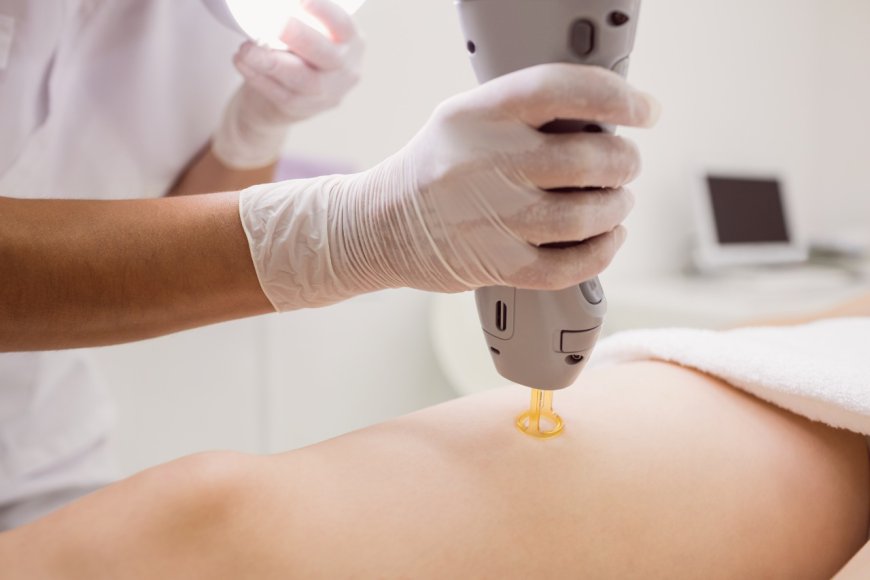Effective Aftercare for Your Laser Hair Removal
Ditch the razor! Explore laser hair removal in Dubai for long-lasting results. Find clinics, learn the benefits, and achieve silky-smooth skin.

Laser hair removal has become an increasingly popular choice for those seeking a long-term solution to unwanted body hair. This advanced technique offers a more permanent alternative to traditional hair removal methods, such as shaving or waxing. However, achieving the best results from your laser hair removal treatment requires more than just the procedure itself; effective aftercare is crucial for ensuring optimal results and minimizing any potential side effects. In this article, we will explore the essential aftercare steps to follow after your Laser Hair Removal in Dubai session.
Understanding Laser Hair Removal
Before delving into aftercare, it’s essential to understand how laser hair removal works. The procedure involves using concentrated light beams to target and destroy hair follicles, preventing future hair growth. While laser hair removal is effective for many skin types and hair colors, the results can vary based on individual factors, such as skin tone and hair thickness. Aftercare plays a vital role in enhancing the effectiveness of the treatment and ensuring the skin heals properly.
Essential Aftercare Steps
1. Avoid Sun Exposure
One of the most critical aftercare steps is to avoid sun exposure for at least two weeks following your laser hair removal treatment. Direct sunlight can cause skin irritation and increase the risk of complications such as hyperpigmentation or blistering. If you must be outside, wear a broad-spectrum sunscreen with an SPF of 30 or higher and protective clothing to shield your skin from UV rays.
2. Keep the Treated Area Clean and Moisturized
After your treatment, it’s essential to keep the treated area clean. Gently wash the area with a mild, fragrance-free soap to remove any residual gel or debris. Avoid scrubbing or using harsh exfoliants, as these can irritate the skin. After cleansing, apply a gentle, hydrating moisturizer to keep the skin supple and reduce dryness.
3. Avoid Hot Showers and Baths
For the first 24 to 48 hours after your laser hair removal session, it’s advisable to avoid hot showers, baths, or saunas. The heat can exacerbate redness and swelling, potentially leading to discomfort. Instead, opt for lukewarm water and avoid any activities that may cause excessive sweating, such as vigorous exercise or hot yoga.
4. Refrain from Waxing or Plucking
After laser hair removal, you may be tempted to wax or pluck any remaining hair. However, this is not advisable, as these methods can disrupt the hair growth cycle and interfere with the effectiveness of the treatment. Instead, allow any hair to fall out naturally. Typically, you can expect to see shedding within a week or two post-treatment.
5. Manage Discomfort and Side Effects
Some individuals may experience mild discomfort, redness, or swelling in the treated area after the procedure. To alleviate these symptoms, you can apply a cold compress or an ice pack wrapped in a cloth to the affected area for short intervals. Over-the-counter pain relievers, such as ibuprofen or acetaminophen, can also help manage any discomfort. Always consult your healthcare provider before taking any medications.
6. Stay Hydrated
Staying hydrated is crucial for your skin’s healing process. Drink plenty of water to keep your skin healthy and facilitate recovery. Proper hydration can help your skin remain resilient and minimize the risk of irritation.
7. Monitor Your Skin
After your laser hair removal session, it’s essential to monitor your skin for any unusual reactions. If you notice persistent redness, blistering, or signs of infection, contact your practitioner immediately for guidance. Early intervention can help prevent complications and ensure your skin heals properly.
8. Follow Up with Your Practitioner
Most laser hair removal treatments require multiple sessions for optimal results. Schedule follow-up appointments as recommended by your practitioner. These sessions will be spaced out according to your hair growth cycle, typically every four to six weeks. During these visits, your practitioner can assess your progress and make any necessary adjustments to your treatment plan.
9. Avoid Certain Skincare Products
After laser hair removal, it’s crucial to be cautious with the skincare products you use on the treated area. Avoid products containing active ingredients such as retinoids, glycolic acid, or salicylic acid for at least a week post-treatment. These ingredients can irritate the skin and hinder the healing process. Instead, opt for gentle, hydrating products that are free from fragrances and harsh chemicals.
10. Be Patient
Lastly, patience is vital in the aftercare process. Hair follicles may take time to respond to the treatment, and it’s normal for some hair to still be present in the weeks following your session. Avoid the urge to rush the process or seek additional treatments too soon. Trust the timeline provided by your practitioner, and focus on caring for your skin during this period.
Conclusion
Effective aftercare is a crucial component of the laser hair removal process. By following these guidelines, you can promote optimal healing, minimize side effects, and enhance the results of your treatment. Remember, investing time in proper aftercare will not only improve your skin’s appearance but also contribute to the long-term effectiveness of your laser hair removal journey. Always consult your practitioner for personalized advice and recommendations based on your specific skin type and treatment plan.
